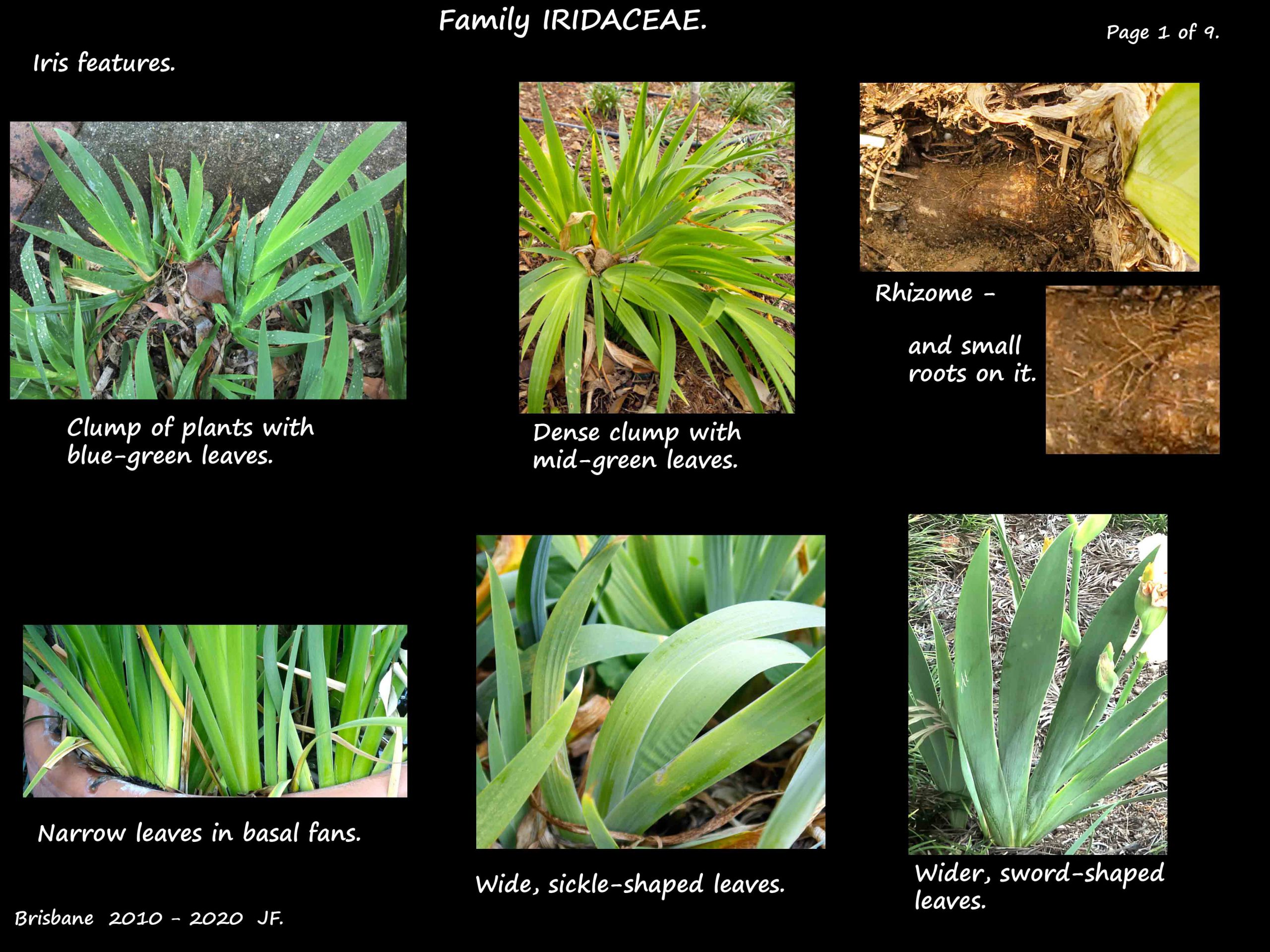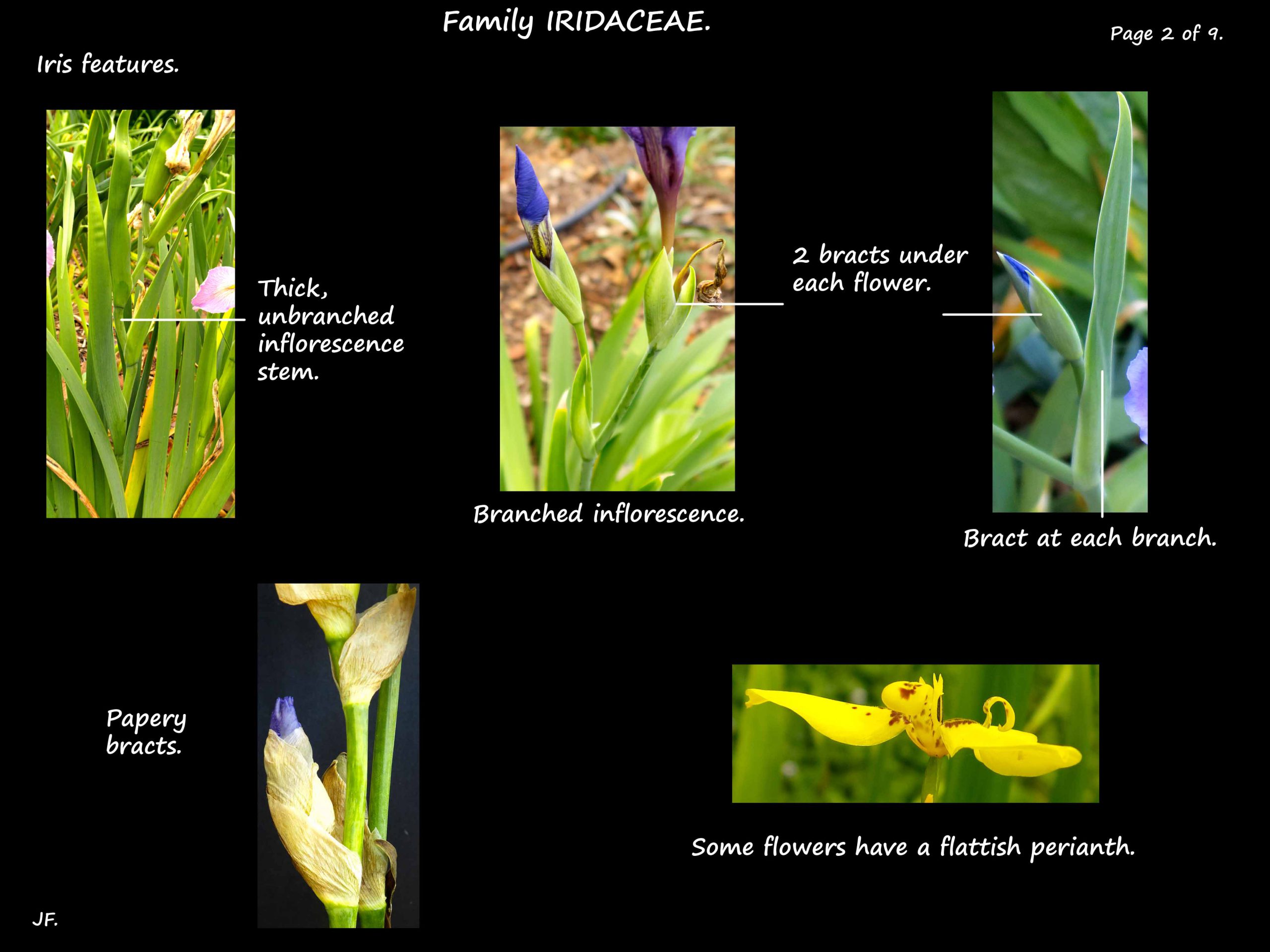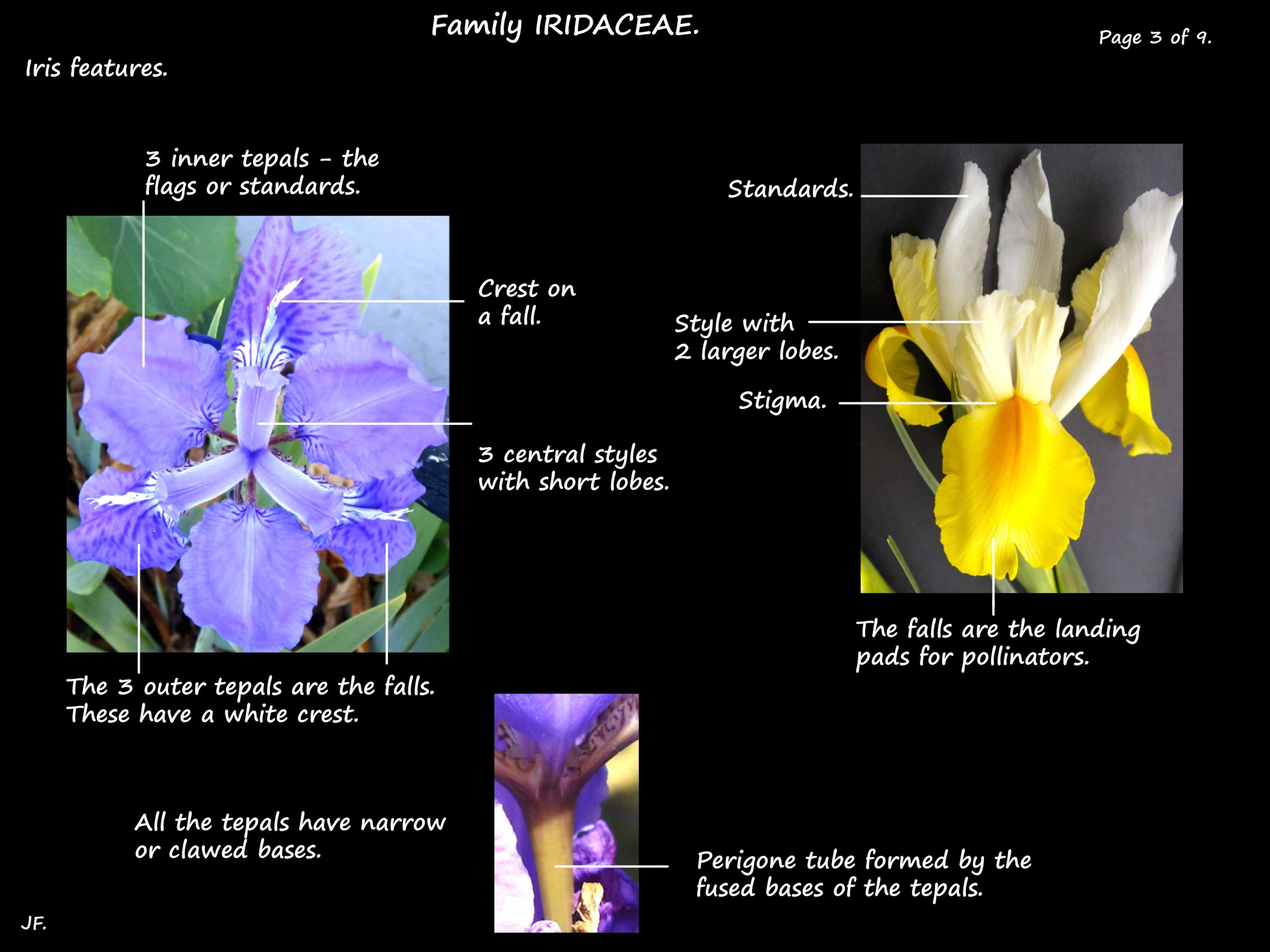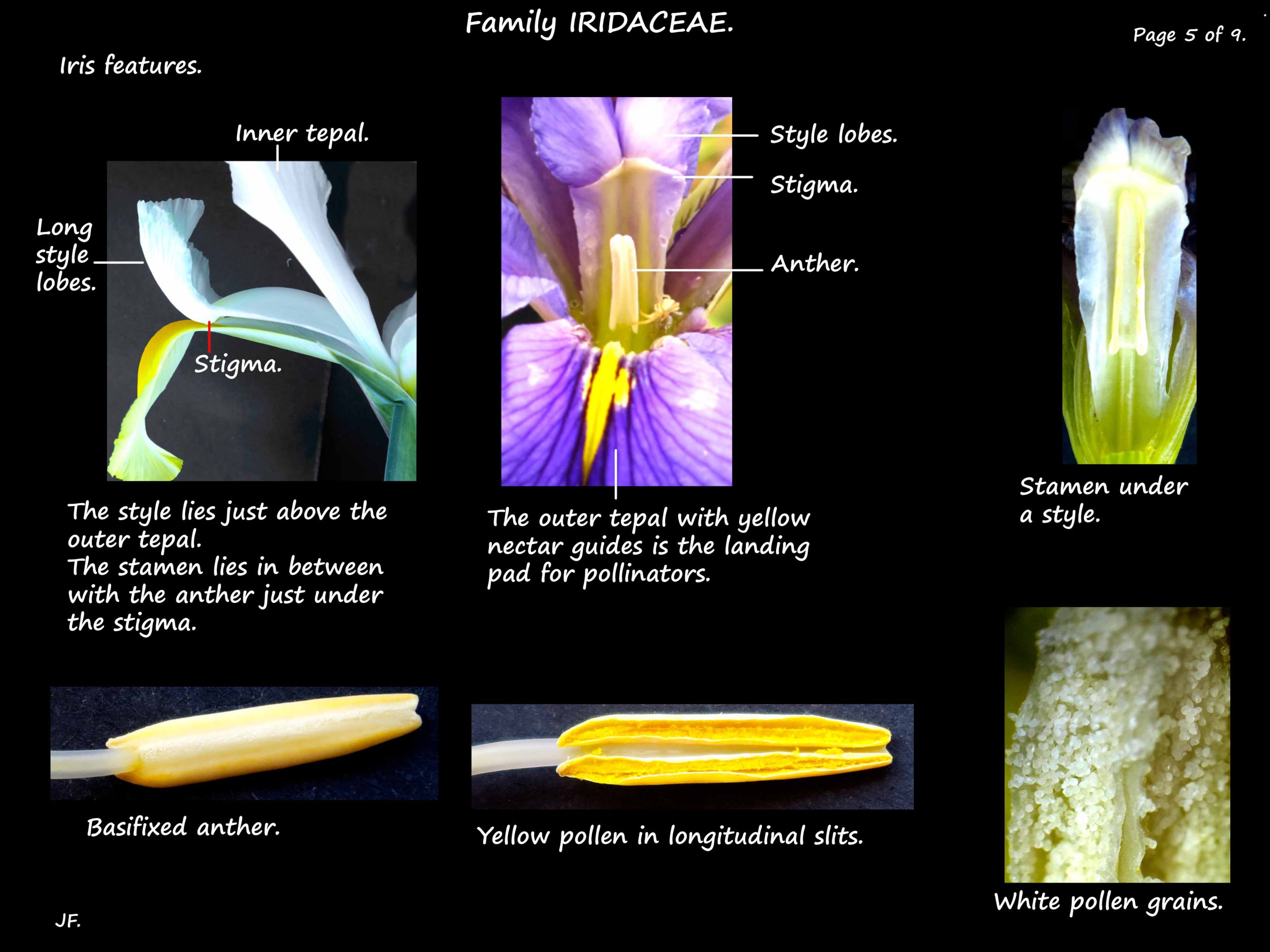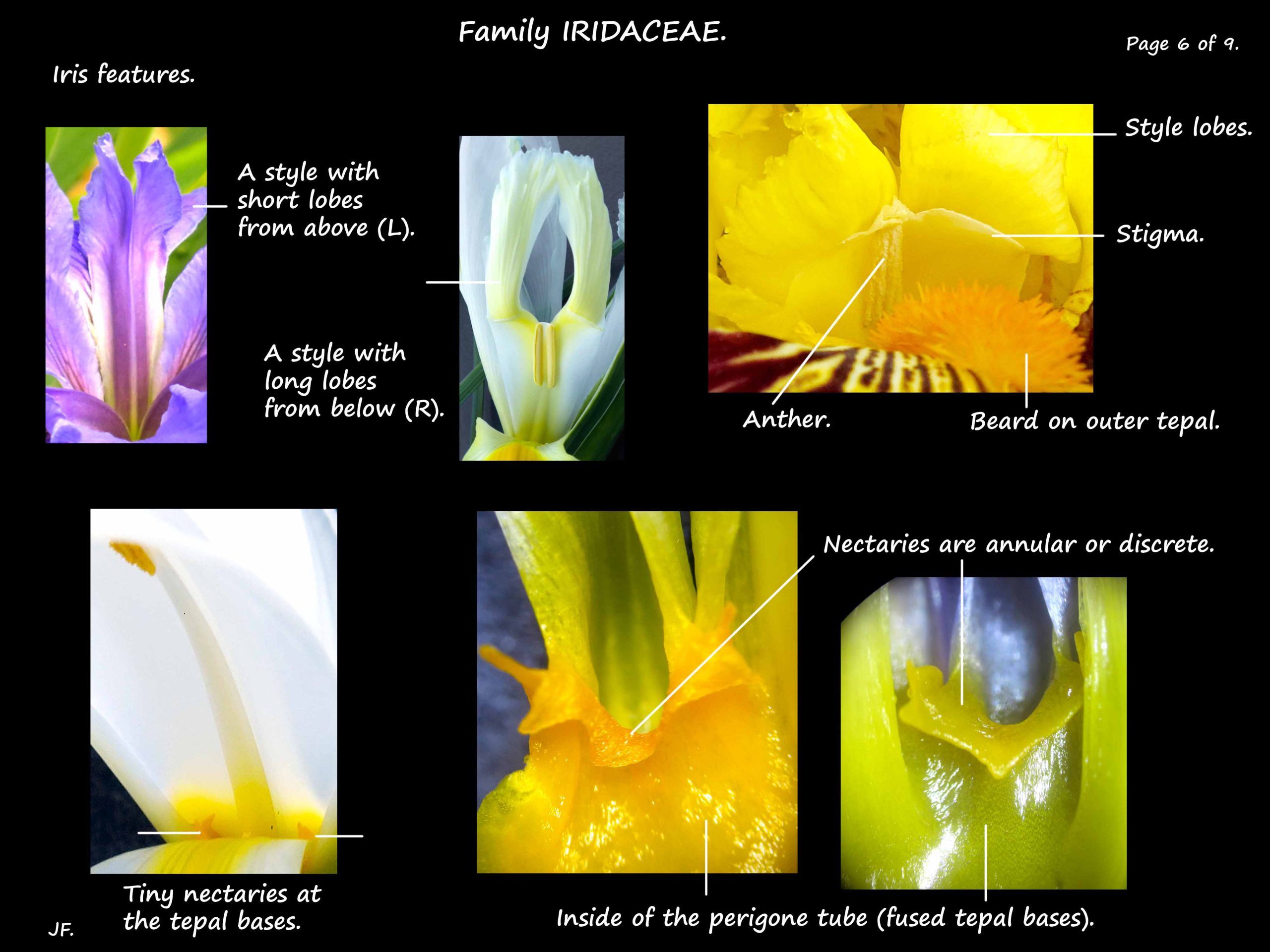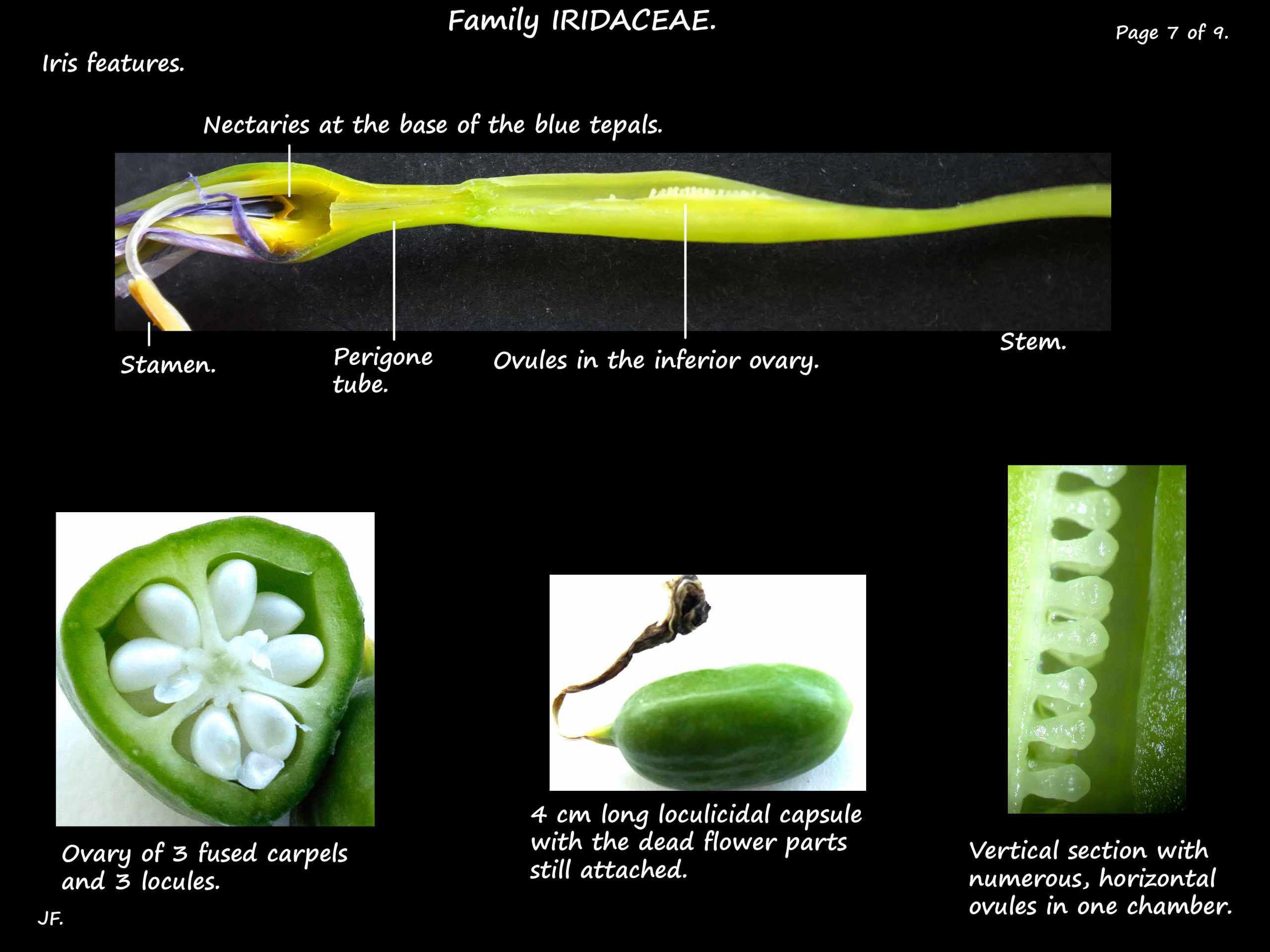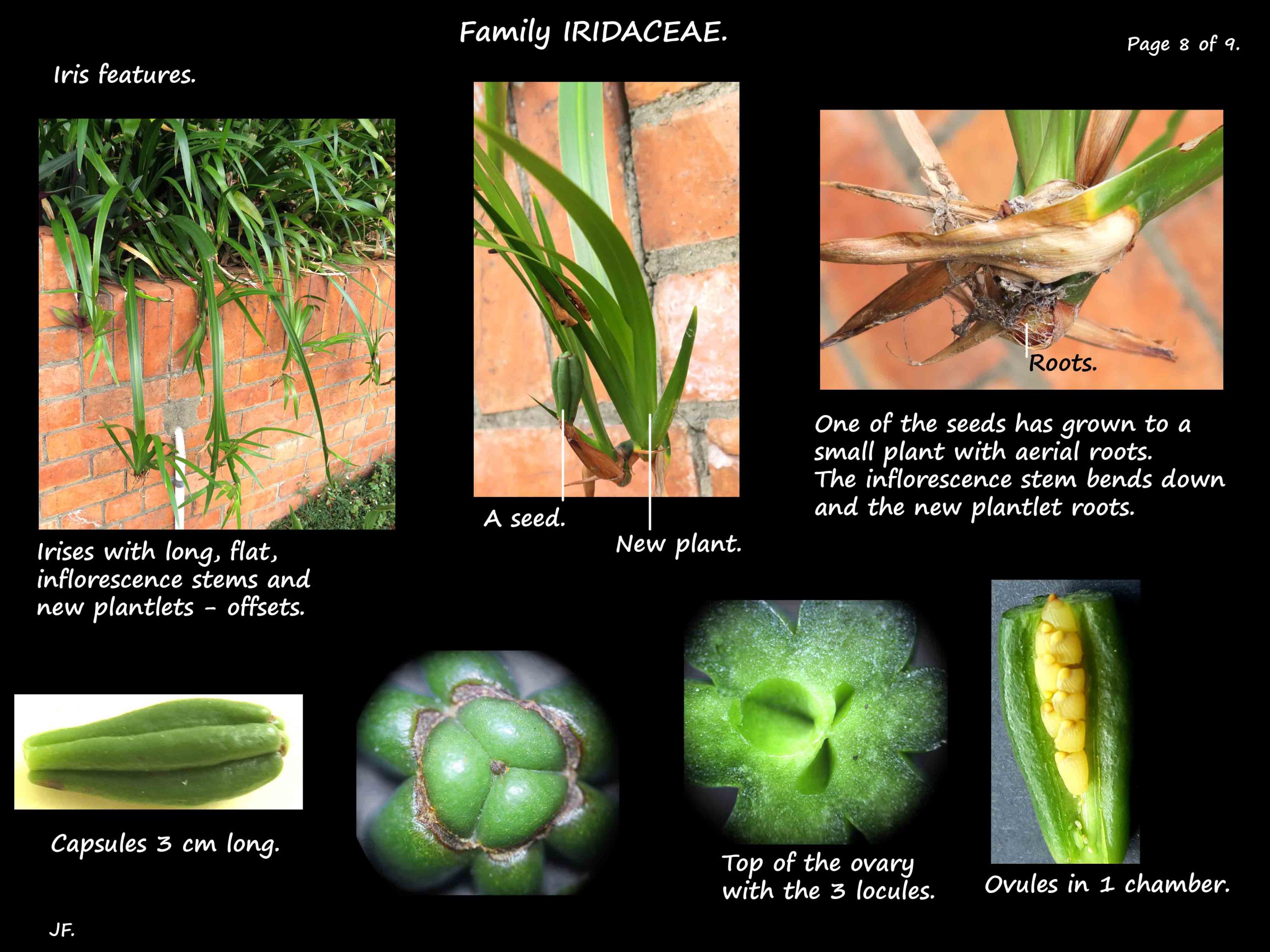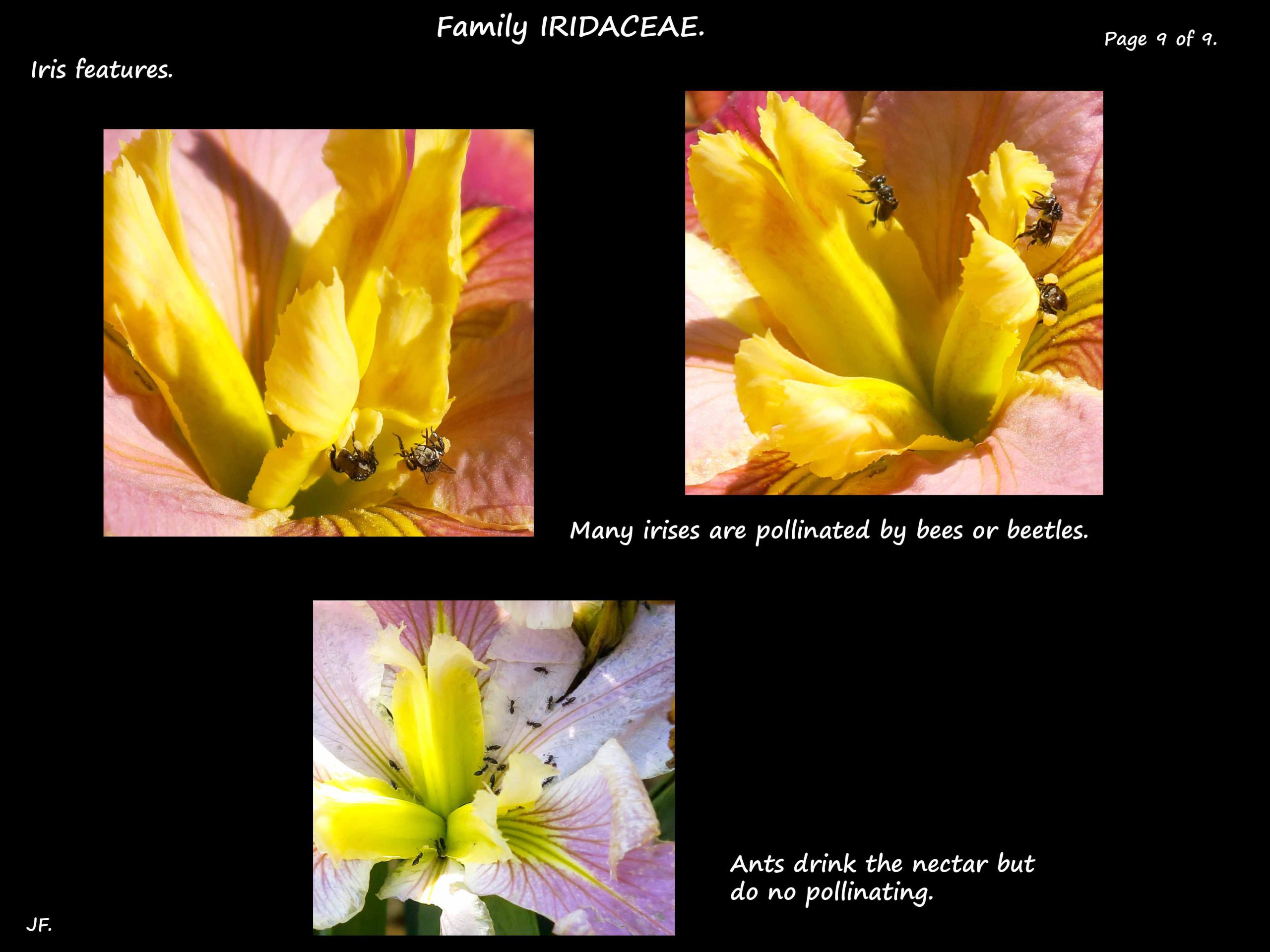Iris.
Family Iridaceae > Subfamily Iridoideae > Tribe Irideae.
Iris is a genus of 260–300 species and Iris germanica is the type species.
‘Iris’ is the genus and common name.
There are a lot of naturally occuring hybrids plus over 60,000 registered varieties.
Perennial, clump forming plants growing from rhizomes or bulbs.
(Rhizomes are root-like underground stems and bulbs are underground buds with fleshy scales.)
The rhizomatous irises have sword-shaped leaves and the bulbous ones cylindrical leaves.
Leaves form basal fans and some are variegated.
The branched or unbranched inflorescence stem can be hollow or solid.
Each has 1 or more flowers that are mostly on stalks but some are stalkless (I. reticulata).
The outer 3 tepals (sepals or petals) are the ‘falls’ and the inner 3 tepals (petals)
are the ‘flags’ or ‘standards’.
Their bases are fused to form a short perigone tube.
The falls are usually larger and curve downwards.
They have a narrow base and a wide blade.
They are often patterned with contrasting veins, spots or lines.
Some rhizomatous irises have a beard of short filaments on the falls and sometimes the standards.
Others have a raised crest or a bright signal spot at the base of the blade.
The falls act as landing pads for pollinators.
The flags or standards are typically smaller and erect.
Some species have 6 similar tepals all spreading out.
Flowers come in a huge range colours and markings.
Most have nectaries at the base of the tepals or around the stamens or styles.
These perigonal nectaries can be discrete or a continuous ring.
The 3 stamens insert at the base of the falls and are hidden under the wide petaloid styles.
The inferior ovary consists of 3 fused carpels and 3 locules with numerous ovules.
There are 3 wide, flat petaloid styles that cover the stamens.
They usually divide into 2 lobes that can be short or half the length of the style.
The stigmas are on narrow flaps at the base of the lobes and just above the anthers.
The fruit are loculicidal, 3-chambered capsules with often flat and winged seeds.
Classification of irises.
Most sources divide irises into 6 subgenera but others use up to ten.
Some refer to the subgenera as genera.
Typical subgenera are Hermodactyloides, Iris, Limniris, Nepalensis, Scorpiris and Xiphium.
It is easier here to divided them into morphological groups.
1. Irises growing from rhizomes – the largest group.
1a. Bearded iris (subgenus Iris) and also known as the German bearded iris.
1b. Beardless iris include the Siberian, Japanese and Louisiana irises.
1c. Crested iris.
2. Irises growing from bulbs.
2a. Dutch iris – Iris hollandica.
2b. Reticulata irises.
There are a few other smaller groups.
Identification of irises.
With tens of thousands of named cultivars and hybrids plus many more unnamed ones individual
specimens cannot reliably be identified from pictures in books or on the internet.
There are many reasons for this including the following.
There are almost certainly no pictures of all the cultivars in books or online.
Digital cameras do not always capture reds or blues accurately and printed images are not always accurate.
All registered cultivars have a colour description but these can be very brief.
I have not seen an official colour guide for irises to know exactly what each colour and shade is.
Even nurseries can describe the colours of the same hybrid differently.
Numerous cultivars can be very similar apart from subtle differences in colour depth and shades.
J.F
